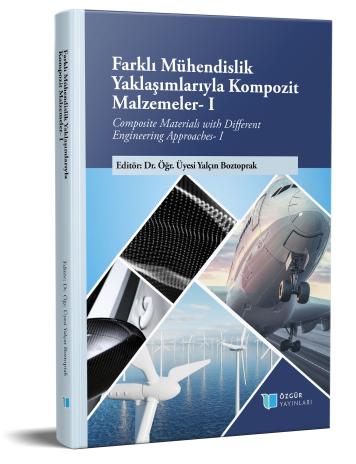
Engineering Applications of Composite Materials: Classification, Mechanical Calculations, Manufacturing Methods, and Applications
Chapter from the book:
Boztoprak,
Y.
(ed.)
2023.
Composite Materials with Different Engineering Approaches- I.
Synopsis
In today's rapidly evolving technology-driven world, the expected qualities of materials that meet the industry's needs are rapidly increasing. These qualities, which consist of many factors such as high strength capability, manufacturability, workability, formability, lightweight, and cost, constantly show improvement and development. As a result, material technologies and manufacturing methods are rapidly advancing to achieve the desired properties. In this context, composite materials, which are formed by the combination of two or more materials and possess superior specific characteristics, are prominent in the industry. While composite materials were produced from materials such as clay, water, and straw in primitive ages, they are now produced using high-tech engineering materials and widely used in various fields. This study includes the definition and classification of composite materials, their mechanical properties, production methods, and their uses in different engineering fields. The most important and fundamental issue in the classification of composite materials is the matrix and reinforcement phases that constitute the composite material. The combination of matrix and reinforcement elements determines the overall physical and mechanical properties of the composite. The dimensional effects and distributions within the structure of materials such as metal, ceramic, polymer, and fiber, which can be used as matrix and reinforcement phases, have been thoroughly examined and interpreted. In the selection of materials to be used in engineering applications, the most important factor is the mechanical properties of the materials. Due to the widespread use of composite materials in various engineering fields, it is inevitable to establish the mechanical properties of composites. In this regard, our study provides detailed analysis of factors such as elastic modulus, material surface area, and applied force that influence the mechanical behavior of the material, and includes engineering calculations of composite materials. Additionally, it is known that the manufacturing method of a material also affects its properties. Therefore, within this scope, the manual lay-up, spray-up, filament winding, resin transfer molding, and vacuum bagging methods used especially in fiber composites are explained, along with their advantages and disadvantages. The classification, mechanical properties, and production methods of composite materials, as described, are exemplified with their applications in various industries such as defense, aerospace, automotive, construction, electrical, and electronics, using specific examples.

